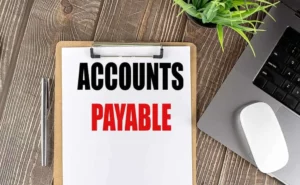The rise of the digital economy, where services are delivered via the Internet, changes how ventures interact with customers and process cash flow. Nearly 70% of company owners highlight that subscription business models open limitless prospects for them. However, shifting to such a way of operating requires an advanced tool to manage payment streams. Traditional methods of manual invoicing are greatly inferior in effectiveness to recurring billing.
This blog post will explain the essence of automated recurring billing and explore how it can aid your business. We will also discuss basic models that can be appropriate for your case.
What is Recurring Billing
People value comfort and don’t like to waste time entering payment data each time they want to watch a movie on Netflix. Recurring billing is a go-to option in this case because it automates the process and allows setting regular intervals for transactions to provide continuous access to offerings without the annoyance of manual data entry.
Recurring billing is popular across various industries in which service providers offer ongoing availability:
- Media and Entertainment: Services like Netflix or Spotify use such a system to bill users, giving them ongoing access to content libraries.
- Cloud Services: SaaS solutions like Microsoft 365, Adobe Creative Cloud, and Dropbox use automated charging for software licenses and cloud storage on a subscription basis.
- Gyms and Fitness Centers: Memberships to gyms, fitness studios, and wellness centers. Moreover, vitamin delivery, wellness apps, and personalized health plans also use recurring payments.
- Telecom Services: Phone, Internet, and cable companies choose scheduled fee collection based on monthly usage.
- E-learning Platforms: Online platforms like Coursera or LinkedIn Learning offer subscription access or membership fees.
This list is far from complete. Also, many business applications, including CRM systems, project management tools, and accounting software, operate on a recurring billing model.
How Recurring Billing Works
It is a systematic approach that consists of several elements, including cycles, payment methods, and the automation of processes. Let’s look at them in detail.
- The invoicing cycle is the period between each transaction. It determines how often the end user must make payments. It could be on a weekly, monthly, or even annual basis.
- Payment methods vary depending on client preferences and company requirements. Credit cards are one of the most popular methods. People enter their card details, which are securely stored and used for automatic charges. Direct debit allows firms to withdraw payments directly from a client’s bank account. This method provides lower fees and is suitable for expensive transactions. Debit cards and digital wallets offer additional options for subscribers who prefer these payment options.
- Automation is the core of the charging system. Once set up, the system automatically collects payments on scheduled dates, generates invoices or receipts, and sends them. Automated notifications inform customers about payment failures and updates in agreements.
A well-adjusted recurring billing also manages renewals and cancellations. According to the settings, the system will automatically renew the subscriptions at the end of each cycle to ensure uninterrupted service. If a customer wants to unsubscribe, the system blocks future fee collection.
Primary Benefits of Recurring Billing
Automated payments are a sidekick for business owners and customers as they bridge the gap between timely remittances and uninterrupted service. Let’s focus on three primary benefits that subscription billing brings to companies.
Better revenue predictability
By charging users at regular intervals, businesses can foresee revenue streams and in such a way improve their financial planning, accounts receivable (A/R) tracking, and resource distribution. This predictability is particularly valuable in industries where long-term customer relationships play a crucial role, such as SaaS, media streaming, and fitness memberships.
Improved customer retention
Subscription models inherently foster loyalty by encouraging ongoing engagement with a product or offering. When clients commit to a subscription, they are more likely to stay engaged over time, which leads to higher retention rates. Moreover, recurring billing reduces churn rates by minimizing the likelihood of service interruptions due to missed payments. Since payments are automated, customers don’t need to worry about remembering to renew their subscriptions manually, which decreases the chances of accidental cancellations.
Operational efficiency and cost savings
By automating the billing process, organizations can streamline their processes, cut the need for manual control, and lower the risk of errors. This automation not only saves time and resources but also improves accuracy in billing, leading to fewer disputes and better customer satisfaction. Businesses that handle a large volume of transactions—telecom companies, utility providers, and e-commerce platforms—reduce their administrative burden associated with processing payments. The system automatically handles invoicing, money collection, and account management. This increased efficiency results in cost savings, as businesses spend less on labor and are less prone to revenue loss due to billing errors.
Which Recurring Billing Model to Choose
Fixed and variable pricing models cater to different business needs and customer preferences. Understanding the differences between them will help you choose the most appropriate approach for your case.
When using a fixed recurring billing, your clients will be charged a consistent amount at regular intervals, regardless of their actual product usage. This approach is simple and predictable. Gym memberships typically use such a model, where individuals pay a set monthly fee for access to the facility.
Variable recurring billing charges end users based on their actual usage during an established period. The sum varies each cycle, reflecting how much of the service or product the customer has used. This model is more flexible but requires more sophisticated tracking capabilities. It is best suited for industries where usage can fluctuate, such as utilities (electricity, water), telecommunications (phone data, call minutes), and cloud services (storage, computing power).
Selecting the Right Recurring Billing Software
Selecting the right recurring billing software is essential for streamlining charging processes, enhancing end user satisfaction, and accurate revenue tracking. Focus on pivotal features and explore popular options available in the market:
- Flexibility: The software should support various billing cycles and handle fixed and variable models.
- Payment Processing: Find solutions that support several payment methods, currencies, and global payment gateways.
- Customer Management: Features like account management, subscription upgrades, and cancellations are also crucial.
- Reporting and Analytics: Real-time insights into revenue, churn, and payment success are important for data-driven decisions.
- Security: Ensure PCI compliance and robust fraud prevention features.
- Integration: Seamless merging with existing systems like CRM and accounting software is essential.
Popular software offers unique features to cater to different business needs. Stripe Billing is known for its ease of use and global payment processing capabilities, making it ideal for organizations with a worldwide clientele base. SaaS companies favor Chargebee due to its robust subscription management and flexible pricing models. Recurly excels in customer retention and strong analytics. Finally, Zuora is a comprehensive solution for enterprise-level businesses. It supports complex charging scenarios and global operations.
How to Set up Recurring Payments
As a business owner, you have two options: to develop a solution from scratch or choose a ready-to-use one. The last option makes the process much simpler and quicker, as many setup steps are already built into the software. Here’s a streamlined approach:
- Choose a service provider and software that fits your business needs and supports your required billing model and payment methods.
- Connect the software with your existing systems like CRM, bookkeeping, and payment gateways. Many ready-to-use solutions offer easy integration through APIs and pre-built connectors.
- Set up your billing cycles, payment terms, and automated invoicing.
- Enable the customer portal provided by the software, allowing customers to manage their subscriptions, update payment details, and access transaction history.
- Run a few test transactions to ensure everything works smoothly. Once confirmed, you can start enrolling clients into your new system.
- Use the built-in analytics and reporting tools to monitor performance and make any necessary adjustments to your strategy.
Shifting to billing as a service (BaaS) allows businesses to outsource their charging processes to specialized providers. This model leverages advanced technology and expertise without requiring extensive in-house resources.
Bottom Line
Automation goes beyond simple report generation. Recurring billing is a model that benefits both business owners and their customers. Automated payments allow you to predict income volume and lessen the burden on your bookkeeper. The system processes each bill without human intervention and controls terms and amounts. Ready-to-use software is a go-to option as it saves money and fully automates billing processes. All that you need is just to fine-tune it according to your needs.
Invoices and bills require accuracy and expertise. With BooksTime, you can get top-level bookkeeping support from seasoned specialists. Schedule a call to explore how we can help your business.


















